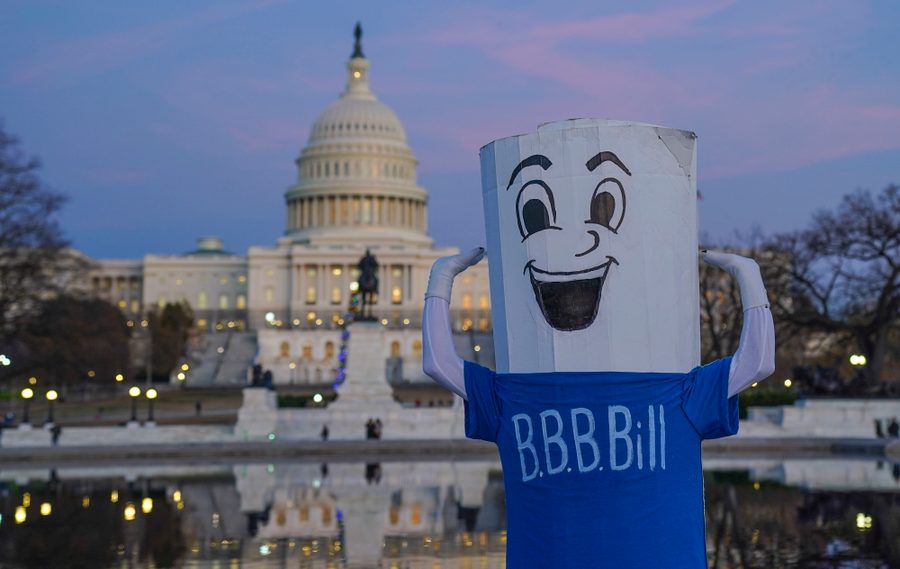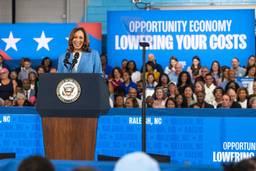The “Great Resignation” Is Just Hype
The solution to Biden’s economic problems is simple: spend more money to fuel the recovery.
Max B. Sawicky

The political fortunes of the Democratic Party look dim, with the Build Back Better bill and voting rights legislation stalled in Congress. One might think the underlying material circumstances of the public are similarly grim, but the fact is that the current economy is not too damn bad. How to explain this seemingly contradictory economic news?
First, we must distinguish between levels and rates of change. Anybody writing for or reading this publication is likely dissatisfied with levels, whether it’s inequality, wages, employment, etc. Rates of change, by contrast, can be grounds for hope. Indeed, a common polling question is whether the respondent thinks the nation “is moving in the right direction.”
The growth in employment, income and wages since March 2020 is the result of extraordinary measures to provide cash benefits and other supports to Americans that are now in danger of being cut back. But given enduring gaps in employment, the solution is obvious: more of the same. To fuel a continued recovery, lawmakers should inject more money into the economy and provide more support for workers. Chatter about inflation, empty shelves, and an epidemic of laziness reinforces Republican talking points, but has no basis in reality.
Let’s start with the labor market, the source of sustenance for the overwhelming majority of the population. The jewel in the crown of President Biden’s record is the exceedingly low unemployment rate of 3.9 percent. In recent decades, however, this statistic has proven to be less informative than we would like.
The problem is not with how the rate is defined, nor with any deficiency in data collection. It is that individual behavior has changed. People who leave the labor force cloud the meaning of “unemployment.”
Individuals choose not to work for all sorts of reasons. The government cannot read minds. To count someone as unemployed, the Bureau of Labor Statistics must decide if the individual really wants a job. Verbal affirmations are insufficient, so survey results are based on whether an unemployed individual says they are looking for work. If the individual is not working or looking, he or she is counted as not in the labor force, hence not employed. To be unemployed, you must be looking for a job. Otherwise, in the official lingo, you are “non-employed.”
Labor force participation (LFP) — which refers to those working plus those looking for a job as a proportion of the population over age 16 — exceeded or matched 67 percent in every month between March 1997 and June 2001. After the Great Recession of 2008, it began to decline. It now stands below 62 percent. We could call this an outside estimate for the missing jobs. To dig into these numbers, we should look at the “civilian noninstitutional population,” currently about 262 million, which excludes the uniformed military and those in prison or nursing homes, leaving those who could conceivably be employed. Today, that five percent drop from 67 percent to 62 percent adds up to over 13 million people.
It is true that an older population tends to reduce the LFP rate, since older people are more likely to be retired. But in recent years, the LFP has also declined for those under 65.
There has been a lot of talk in media outlets about “the great resignation” — a cohort that decided to stop working, thanks to excessive government handouts. Yet the decrease in LFP since, say, the beginning of 2020 — when more generous Covid-related government supports were rolled out — has been around just 2.4 percent, well below the overall decrease of 4 percent since 2000. The Economic Policy Institute reported that as of November 2021, hires in the labor market exceeded quits. That means those who quit tended to move into other, presumably better jobs. (Otherwise, you wouldn’t have quit.)
For these reasons, analysts have been paying more attention to the ratio of employed persons to the population, also known as EPOP. EPOP also requires some context. Many people have no intention of working. The EPOP level is less interesting than changes in that level over time. A genuine intention to work is validated by actually holding a job, if not looking for one. A decrease in the level signals that some people who were working no longer are, and it may not be voluntary.
In 2000, right before the pop of the dot-com bubble, the EPOP stood at 64.4 percent. In 2007, before the housing bubble popped, it was 63.1 percent. And in February 2020, right before the pandemic hit, it was around 61 percent. So why did millions of people who were working in 2000 decide to stop by 2020?
Of course, there are voluntary retirements. A person could decide to leave employment for additional education. The shorter the time frame, however, the more likely it is that labor force exits were not voluntary, hence gaps relative to 2008 are more salient than decreases from 2000. You may want a job, but if you keep looking unsuccessfully, eventually you might be inclined to give up.
On the retirement front, the population is aging, so we would expect a long-term decline in labor force participation and the EPOP. However, the numbers for those between 16 and 54, including “prime-age” workers, are also down from 2000, or 2008.
The long-term declines in LFP and EPOP, abstracting from the over-65s, suggest that the exits from the labor market were involuntary. People stopped looking for work, and naturally did not find work, but under a different set of policies could have been encouraged to take jobs. Higher employment improves every sort of social indicator of well-being.
How is Biden doing?
In simplest terms, national employment is up four percent from January 2021, and is back to almost 98 percent of its peak in February 2020. The “great resignation” is hype. That missing two percent — over three and a half million jobs — is a rock-bottom estimate for jobs that have been lost but ought to be recovered. Biden’s prime-age EPOP is also up from last year, and, at 79 percent, is almost back to the pre-pandemic level in March 2020. Basically, employment is doing really well.
The results for Gross Domestic Product are even better. Real GDP (adjusted for inflation) has come all the way back from the spring of 2020, and then some. It is worth noting that the economy actually began sinking in 2020 before the pandemic ripped through the country. By conventional standards, the GDP recovery has been quite good.
Everybody knows you can’t eat GDP. So, what about incomes? Averages are not helpful. Bill Gates walks into a bar, average income skyrockets. There are a variety of alternatives. The most obvious is median income — the level at which half the population is above, and the other half below. The super-rich can get filthier rich without affecting the median. The poor can become more destitute as well. We’ll get to them in a second.
The problem is that the most helpful income data is not yet available for 2021, so we must resort to indirect approaches. We do have information on average hourly wages, the largest component of income, at least through the third quarter of 2021. There are increases in hourly wages by the end of last year, compared to a year prior, as well as compared to the previous (third) quarter. The annualized magnitude of the increases was about seven percent, which is strong. The most recent panic stats about inflation are also close to seven percent. On average, it appears that accomplished wage growth is keeping up with even pessimistic forecasts of inflation.
Another topical source of economic information is consumer spending. By the latest available data, for the third quarter of 2021, consumer spending is well above its pre-pandemic level, and higher than at the start of 2021.
One clue to the unusually rapid recovery after February 2020 is the change in personal income recorded in just the month of March 2020 — $4.2 trillion, a 21 percent increase. That’s huge and can only be attributed to federal government relief efforts, which entailed borrowing and spending lots of money.
A less obvious gain for workers in 2021 resulted from changes in the composition of employment. There has been a hue and cry over staffing shortages in service industries such as restaurants, hotels, hospitals and childcare. But as noted, employment has come back to a significant extent. The “great resignation” was partly a shift in employment, not a voluntary vacation. Workers found better jobs, and establishments that failed to pay competitively lost workers and business.
As for income distribution, poverty data for 2021 are not yet available. There have been findings on the impact of some policies. Zach Parolin and a team at Columbia University found a poverty rate of 16 percent at the end of 2020, higher than its usual level around 13 or 14 percent, which was cut by the renewal of some of the pandemic relief measures. Benefits in the rescue legislation enacted shortly after Biden took office, particularly the expanded Child Tax Credit, have also been found to significantly reduce poverty among families with children.
The problem with all this data is the gloss on race. Whatever the unemployment rate or the employment-population rate says, there is always a less favorable outcome for people of color. Any narrative that fails to take note of the race gap is problematic. There is no good reason, for instance, that next to the overall unemployment rate for whites of 3.2 percent, the rate for African Americans is more than double, at 7.1 percent. It is not a question of educational attainment, work experience, or any of the other race-blind factors commonly cited to explain labor market outcomes. Since lower-income persons are disproportionately people of color, redistributive measures are intrinsically anti-racist, at least up to a point.
Personal income decreased in 2021, from the first to the third quarter, while market incomes — wages, proprietors’ income and rents — increased. The shortfall was accounted for by cuts in unemployment insurance and the phase-out of other federal programs. In other words, after large bumps in the first half of 2021, federal spending was throttled back.
It’s not complicated. Federal spending financed by debt used for refundable tax credits and unemployment benefits pushes up incomes, consumer spending, and employment, while also advancing racial justice. Since we still have a gap in jobs, now is not the time to fall back on spending. Yet that is exactly what is happening: Biden’s Build Back Better legislation — a cornucopia of social spending — has been stalled, and the Federal Reserve has made statements indicating multiple increases in interest rates this year.
Inflation is in the news again, given the most recent economic release, yet, by and large, it is being used as a boogeyman to push austerity policies. An additional month of bad data is bad news, not so much for the impact on persons, but for the dangers of a rash policy response. As noted above, wages are growing at roughly the same rate as inflation, and Social Security benefits are indexed to inflation. More federal spending helps people more than inflation hurts them. On the one side, we can cite reductions in child poverty, fewer evictions and bankruptcies than would have happened otherwise. And by the way, inflation helps debtors paying fixed interest rates, since their repayments are made in cheaper dollars.
There’s no good argument that passing Build Back Better would worsen the inflation problem, though this reality tends to get lost in the breathless media treatments.
For now, we are stuck behind the roadblocks put up by Joe Manchin, the distinguished Democratic senator from West Virginia who has thrown cold water on BBB. Rumor has it that he would accept a bill of around $1.8 trillion. That would still be a whole lot better than nothing.
Max B. Sawicky is an economist and writer in Virginia, formerly with the Government Accountability Office and the Economic Policy Institute. He is a Senior Research Fellow at the Center for Economic and Policy Research and runs the MaxSpeak, You Listen! blog at sawicky.substack.com.








